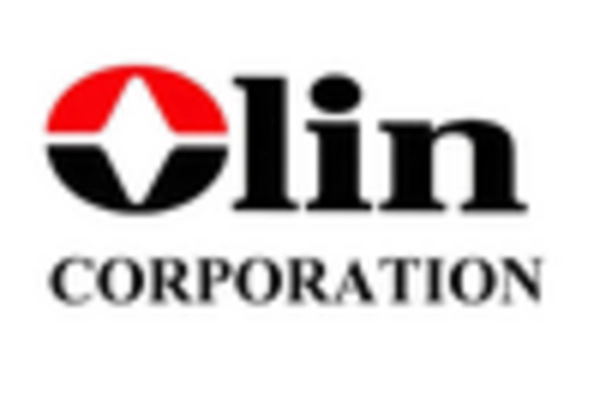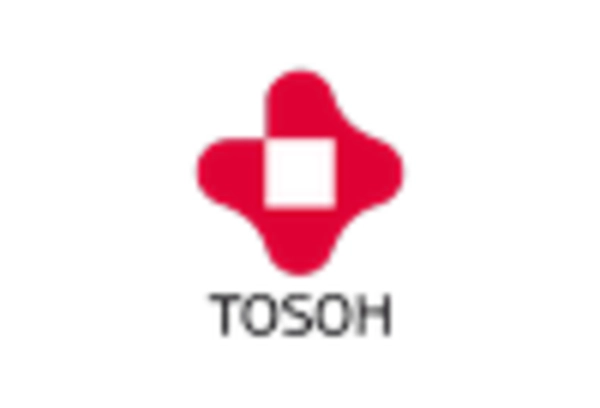Expansion of Agricultural Use
The calcium hypochlorite market is also experiencing growth due to its expanding use in agriculture. Farmers are increasingly utilizing calcium hypochlorite for irrigation water treatment and soil disinfection, recognizing its effectiveness in controlling pathogens and enhancing crop yield. The agricultural sector in Europe is projected to account for about 25% of the total calcium hypochlorite consumption by 2025. This trend is likely to be driven by the need for sustainable agricultural practices and the demand for higher quality produce. As agricultural practices evolve, the calcium hypochlorite market is expected to play a pivotal role in ensuring food safety and quality, thereby contributing to the overall growth of the market.
Rising Environmental Concerns
The calcium hypochlorite market is influenced by rising environmental concerns regarding water pollution and the need for sustainable practices. As awareness of environmental issues grows, there is a shift towards eco-friendly disinfection methods. Calcium hypochlorite, known for its effectiveness in water treatment, is being favored for its ability to eliminate harmful pathogens without leaving harmful residues. This trend is expected to drive the market, as regulatory bodies in Europe advocate for the use of safer chemicals in water treatment processes. The market is projected to see a growth rate of around 4.8% annually, as industries and municipalities seek to adopt more sustainable practices in their operations, thereby enhancing the calcium hypochlorite market's appeal.
Growth in Industrial Applications
The calcium hypochlorite market is witnessing growth driven by its diverse industrial applications. Industries such as textiles, paper, and food processing utilize calcium hypochlorite for bleaching and disinfection purposes. The demand for high-quality products in these sectors is pushing manufacturers to adopt calcium hypochlorite as a preferred chemical agent. In 2025, the industrial segment is expected to account for approximately 40% of the total market share, indicating a robust reliance on this compound for maintaining product quality and safety. Furthermore, the increasing emphasis on hygiene standards in food production and processing is likely to propel the calcium hypochlorite market forward, as companies seek effective solutions to ensure compliance with health regulations.
Increasing Focus on Public Health
The calcium hypochlorite market is experiencing a notable surge in demand due to an increasing focus on public health and sanitation. Governments and health organizations across Europe are emphasizing the importance of clean water and effective disinfection methods. This heightened awareness is driving municipalities and industries to invest in water treatment solutions, where calcium hypochlorite plays a crucial role. The market is projected to grow at a CAGR of approximately 5.2% from 2025 to 2030, reflecting the rising need for safe drinking water and hygienic conditions. As a result, the calcium hypochlorite market is likely to benefit from increased investments in water purification systems and technologies, further solidifying its position in the public health sector.
Technological Advancements in Production
The calcium hypochlorite market is benefiting from technological advancements in production processes. Innovations in manufacturing techniques are leading to more efficient and cost-effective production of calcium hypochlorite. These advancements not only enhance product quality but also reduce production costs, making it more accessible to various sectors. In 2025, the production capacity of calcium hypochlorite in Europe is expected to increase by approximately 15%, driven by these technological improvements. As a result, the calcium hypochlorite market is likely to experience a boost in supply, meeting the growing demand from water treatment facilities and industrial applications. This trend indicates a positive outlook for the market as it adapts to evolving production methodologies.


















Leave a Comment